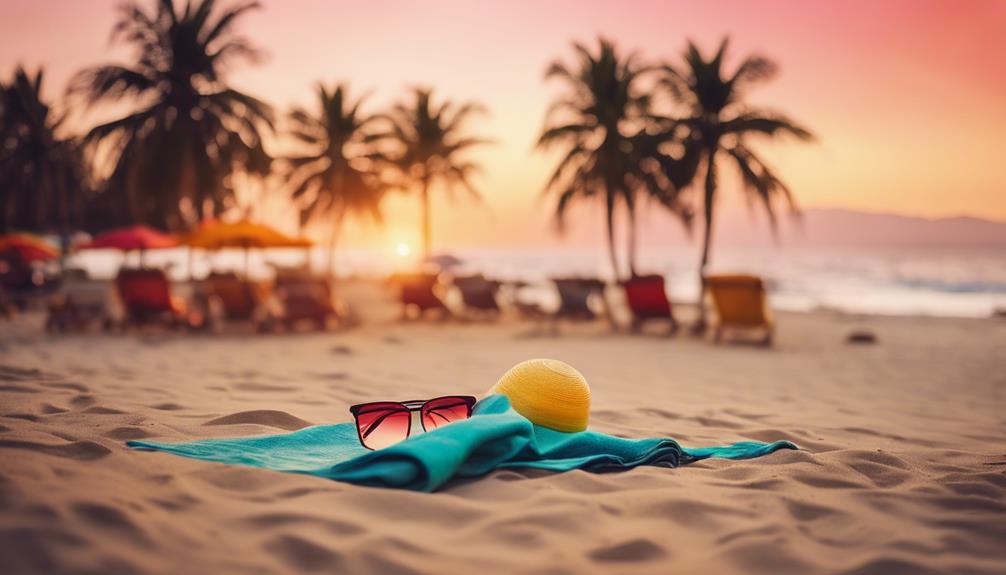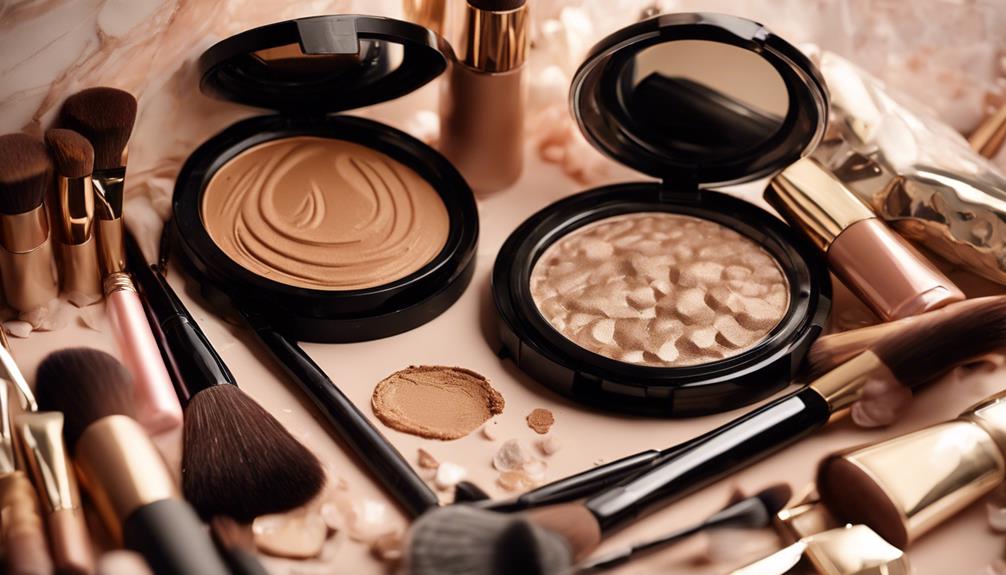Wanna maximize your glow before vacation? It's easier than you think! Start tanning 4-6 weeks ahead; trust me, your future self will thank you. Aim for 3-4 sessions a week to build that beautiful base tan without turning into a lobster. And don't forget the sunscreen—SPF 30 or higher is your best friend! Whether you choose sunless tanners or indoor booths, keep it fun and safe. After tanning, hydrate your skin to keep the glow alive. Who wouldn't want to look like a sun goddess on the beach? Stick around, and there's even more to brighten your tanning game!
Key Takeaways
- Assess your skin type to create a tailored tanning plan and avoid sunburn risks.
- Start tanning 4-6 weeks before your vacation, aiming for 3-4 sessions weekly.
- Use SPF 30+ sunscreen during tanning sessions to protect your skin and prevent damage.
- Maintain hydration by moisturizing daily and using gentle body washes to preserve your tan.
Understanding Your Skin Type
Understanding your skin type is essential for tailoring a safe and effective tanning strategy that enhances your natural glow.
So, how do you figure out your skin type? Start by noticing how your skin reacts to the sun. Do you tan easily, or do you turn into a lobster after just a few minutes?
Genetics play a big role here, so don't be shy about consulting a dermatologist. They'll help you identify your skin type and give you the best advice for tanning.
Remember, you want to boost your glow, not risk a sunburn! Taking the time to know your skin can make all the difference in achieving that perfect tan.
After all, nobody wants to look like a crispy potato, right?
Tanning Safety Guidelines

Prioritizing tanning safety is essential for achieving a beautiful glow without compromising your skin health. You don't want to come back from vacation looking like a lobster, right?
Here are some easy guidelines to keep in mind:
- Always use SPF 30+ sunscreen, even on cloudy days.
- Limit tanning bed sessions to avoid that “crispy” look.
- Gradually build your tan over several weeks—patience is key!
Planning Your Tanning Schedule

To achieve the perfect tan before your vacation, plan your tanning sessions strategically over the next few weeks.
Start about 4-6 weeks before you leave, aiming for 3-4 sessions each week. This way, you'll build a nice base tan without turning into a lobster!
As your trip approaches, you can bump it up to 5-6 sessions weekly for that extra glow. Just remember, your skin might throw a fit if you overdo it, so pay attention to its reactions.
Keep your sessions short, especially at first. And don't forget the sunscreen! You want a beautiful tan, not a painful burn.
Exploring Tanning Methods

There are several effective tanning methods to contemplate, each offering unique benefits and tailored options for your skin type. Whether you're looking for a sun-kissed glow or something a bit more golden, there's a method out there for you!
- Indoor Tanning: Tanning beds give you controlled exposure; just don't overdo it!
- Sunless Tanning: Lotions and sprays are great for a UV-free tan; no sunburns here!
- Outdoor Tanning: Soak up the sun, but remember your sunscreen; nobody likes lobster skin!
With these options, you can find the perfect tanning method that suits your vibe and skin type.
Happy tanning!
Pre-Vacation Tanning Tips

Before heading out on vacation, it's crucial to assess your skin type and create a tanning plan that guarantees a safe and effective glow.
First, figure out if your skin tans easily or burns like toast. You don't want to look like a lobster on your beach trip!
Start tanning about 4-6 weeks before your vacation, aiming for 3-4 sessions a week. And remember, sunscreen is your best friend—even if you're trying to tan!
Use an SPF of 30 or higher to protect your skin. Keep your sessions short to avoid overdoing it; nobody wants to be that person who can't sit comfortably.
Post-Tanning Care Routine

Maintaining your tan is essential for prolonging that sun-kissed glow, and it starts with a solid post-tanning care routine. You wanna keep that glow without looking like a peeling lizard, right? Here's how to do it:
Moisturize daily: Keep your skin hydrated to avoid flaking.
Use gentle body washes: Skip the harsh soaps that strip your tan away.
Shower with lukewarm water: Hot showers might feel nice, but they fade your color faster!
Apply SPF 30+ sunscreen: Protect your skin while keeping that bronzed look.
Stick to these tips, and you'll look fabulous on your vacation! Who doesn't want to strut around with a beautiful tan? Enjoy your glow! ��
Trending Tanning Topics

Trending tanning topics frequently highlight the latest tips and products that can help you achieve and maintain your perfect glow.
You've probably heard about those fancy sunless tanning lotions and sprays popping up everywhere, right? They're a game changer for that sun-kissed look without the harmful UV rays.
Plus, don't forget about the importance of good tanning bed goggles—your eyes deserve some love too!
Did you know that exfoliating before you tan can make a huge difference? It's true!
And, if your tan fades faster than you expected, don't panic! Just slap on some moisturizer daily, and you'll be golden.
Frequently Asked Questions
How Can I Tell if My Tan Is Fading?
You can tell your tan's fading if your skin appears lighter and patchy. Look for dryness or flaking, and if your tan starts to wash off during showers, it's time to refresh your glow.
What Foods Help Enhance My Skin's Natural Glow?
To enhance your skin's natural glow, eat vibrant fruits, indulge in leafy greens, savor healthy fats, and hydrate with plenty of water. These foods nourish your skin, boost radiance, and promote overall health for a luminous appearance.
Can I Tan if I Have Sensitive Skin?
Yes, you can tan with sensitive skin, but you need to be cautious. Gradually increase exposure, use high-SPF sunscreen, and monitor for irritation. Consult a dermatologist for tailored advice to guarantee your safety.
How Often Should I Moisturize My Skin Post-Tanning?
You should moisturize your skin daily after tanning to maintain hydration and prevent flaking. Apply a rich moisturizer right after showering and consider using products specifically designed for post-tan care to enhance longevity and glow.
What Are the Best Products to Extend My Tan?
To extend your tan, you should use daily moisturizers rich in hydration, apply tan-extending lotions, and consider gradual tanning products. Avoid hot showers and exfoliation to keep your color vibrant and long-lasting.
Conclusion
So, there you have it! With a little planning and the right approach, you can rock that sun-kissed glow like it's the hottest trend since sliced bread.
Remember to listen to your skin, stay safe, and have fun with your tanning routine.
Whether you hit the beach, the tanning bed, or go for a sunless lotion, you'll shine bright on your vacation.
Now, grab that sunscreen and get glowing—you've got this!










